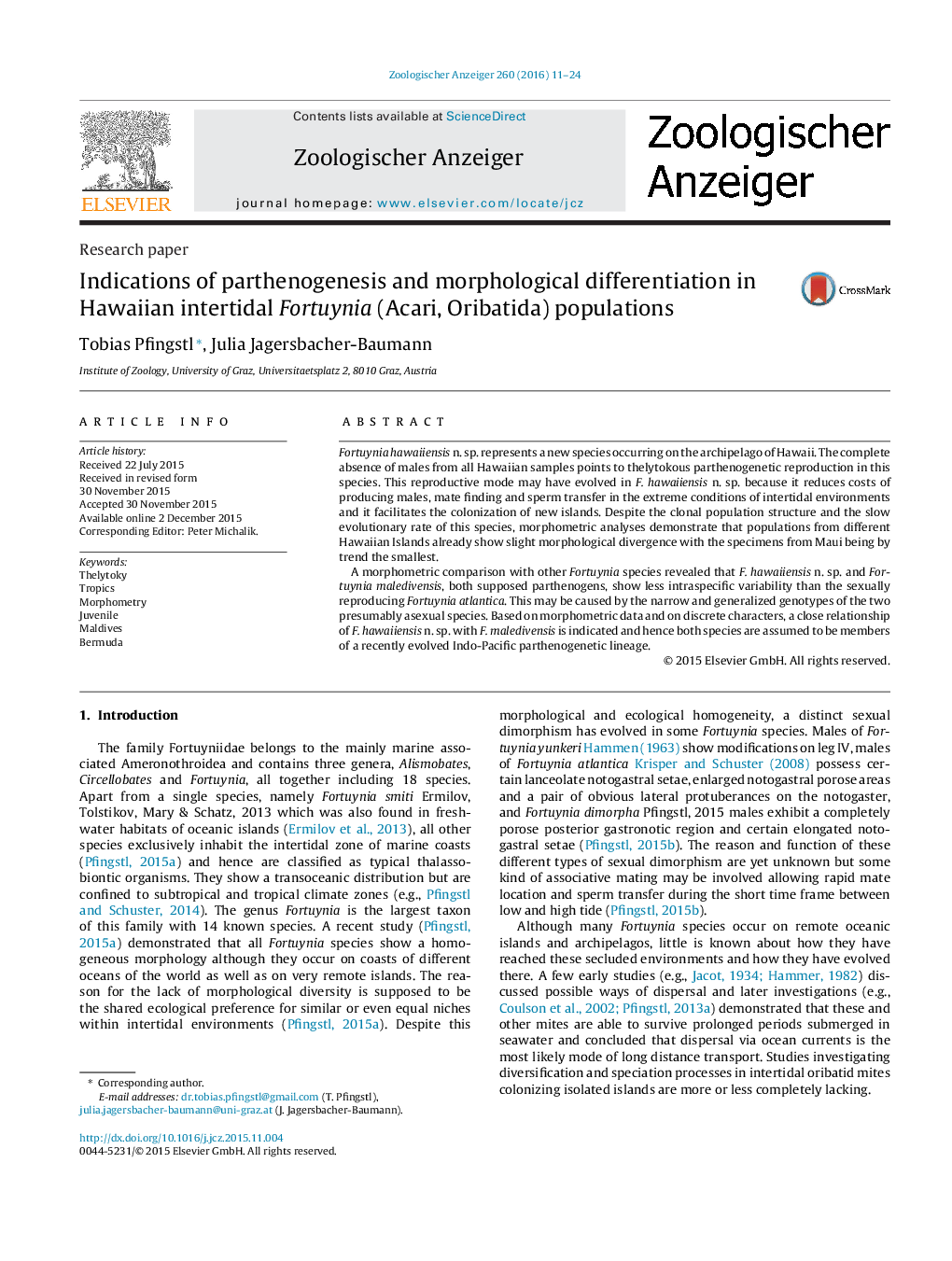| Article ID | Journal | Published Year | Pages | File Type |
|---|---|---|---|---|
| 2790473 | Zoologischer Anzeiger - A Journal of Comparative Zoology | 2016 | 14 Pages |
Fortuynia hawaiiensis n. sp. represents a new species occurring on the archipelago of Hawaii. The complete absence of males from all Hawaiian samples points to thelytokous parthenogenetic reproduction in this species. This reproductive mode may have evolved in F. hawaiiensis n. sp. because it reduces costs of producing males, mate finding and sperm transfer in the extreme conditions of intertidal environments and it facilitates the colonization of new islands. Despite the clonal population structure and the slow evolutionary rate of this species, morphometric analyses demonstrate that populations from different Hawaiian Islands already show slight morphological divergence with the specimens from Maui being by trend the smallest.A morphometric comparison with other Fortuynia species revealed that F. hawaiiensis n. sp. and Fortuynia maledivensis, both supposed parthenogens, show less intraspecific variability than the sexually reproducing Fortuynia atlantica. This may be caused by the narrow and generalized genotypes of the two presumably asexual species. Based on morphometric data and on discrete characters, a close relationship of F. hawaiiensis n. sp. with F. maledivensis is indicated and hence both species are assumed to be members of a recently evolved Indo-Pacific parthenogenetic lineage.
